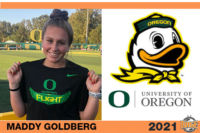RAGE LEADERSHIP PROJECT U12 Premier – Kieran Wallac
My name is Kieran Wallace and I choose to work with E-Soccer as my Leadership Project. E-Soccer is a free soccer full-inclusion program for kids with special needs ages 5-18 run by Broch Brody. The special needs players learn basic soccer skills as well as how to interact with others. The volunteer coaching staff provides one-to-one or small-group training. E-Soccer meets once a week and provides great encouragement and support to special needs families in the community.
I didn’t know anyone the first time I went to volunteer at E-Soccer but all of the volunteer coaches were very welcoming and I looked forward to working with the participants. I felt very comfortable working with these kids because I have a 7 yr old brother with special needs. I helped out with the 5-8 year olds. It was really fun to use my experience with someone with special needs and teach the kids the sport I love. In the beginning of the season, the older first time volunteer coaches who had no experience with kids with special needs would watch how I interacted with the athletes and got them to participate in the activities. You can’t treat these kids like babies. Treat them like you would treat any kid their age. They just need more encouragement and patience on your part to do what you are asking. It meant a lot to me that I was able to serve as a role model for other volunteers and help make them more comfortable with these athletes.
After my first session, I had so much fun that I continued to volunteer coach every week for the entire spring season. It was so rewarding to get the appreciation for my efforts not just in the kids bonding with me, but from the parents who were so thankful of someone taking the time to connect with their kids.
I would recommend volunteering for E-soccer to everyone. It is a great way to share your love of soccer with kids and parents who are so appreciative of the time that you offer. I can’t wait until the next season!







